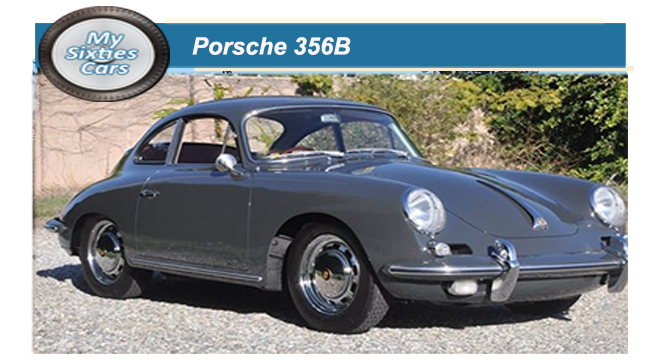
Having taken the Porsche 356 in its original format as far as it could go, during the late Fifties, Frederick Porsche Junior, or Ferry as he was mostly known, decided that it was time to roll out a substantial design update.
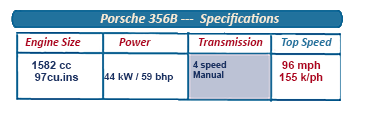 The latest version of the iconic convertible and coupe, in true Porsche understatement, was handed the simple title of the 356B.
The latest version of the iconic convertible and coupe, in true Porsche understatement, was handed the simple title of the 356B.
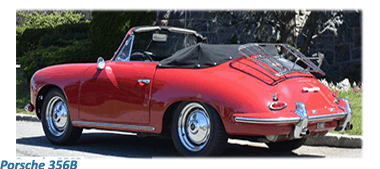 Launched late in 1959, the 356B had a higher nose, high-set bumpers and enlarged windows than the 356 and came in two new styles — the speedster-based Roadsters and a notchback coupe, with coachwork from Karmann.
Launched late in 1959, the 356B had a higher nose, high-set bumpers and enlarged windows than the 356 and came in two new styles — the speedster-based Roadsters and a notchback coupe, with coachwork from Karmann.
The Porsche 356B was powered by a 1600cc engine designed and produced in-house.
The standard setting was far from being the most powerful, capable of generating just 60 bhp and reaching a top speed of less than 100 mph. (155 k/ph).
To most Porsche lovers, that kind of performance was more than adequate, especially in such a low-slung car, where you could really feel the road.
![]()
Anyone looking for more power could invest a little more money to have Porsche’s engineers to increase the compression levels so that the engine was capable of developing 75 bhp or even 90 bhp.
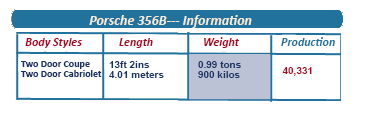 Marketed as the Super 90, this engine could push the Porsche 356B up to 110mph (177kph).
Marketed as the Super 90, this engine could push the Porsche 356B up to 110mph (177kph).
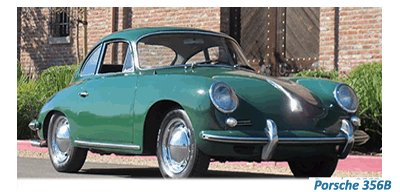 State of the art Solex carburettors could even be specified for the 60 and the 75 bhp engines, that, under the proper circumstances, could push the car even further.
State of the art Solex carburettors could even be specified for the 60 and the 75 bhp engines, that, under the proper circumstances, could push the car even further.
In 1963, Porsche carried out their last major “tweak” of the 356 series, leaving the exterior untouched, with the significant upgrade being replacing the drum brakes with discs.
Other minor refinements included a re-designed dimmer switch that could be operated hands-free, as well as a variable-speed windshield wiper.
![]()
Both of these updates, while seeming to be minor, were explicitly designed to make the driving experience, either at night or in inclement weather, a less stressful experience than had been in the earlier 356s.
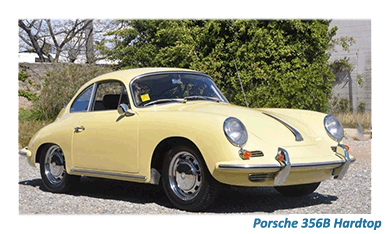 The Porsche 356B and 356 C continued to sell steadily up to the mid-Sixties continued to be in demand. Despite the increase in sales, Ferry Porsche was adamant in his insistence that all the cars sold would be produced primarily by hand, with no variation in quality.
The Porsche 356B and 356 C continued to sell steadily up to the mid-Sixties continued to be in demand. Despite the increase in sales, Ferry Porsche was adamant in his insistence that all the cars sold would be produced primarily by hand, with no variation in quality.
When the what must have been painful decision was made to retire the 356, after almost ten years in production, there were already a couple of other models available, that could be named as its replacement, although it was agreed that the 901 (later 911) was the road car was this remarkable car’s most natural successor.







